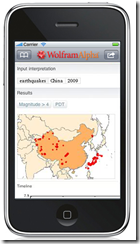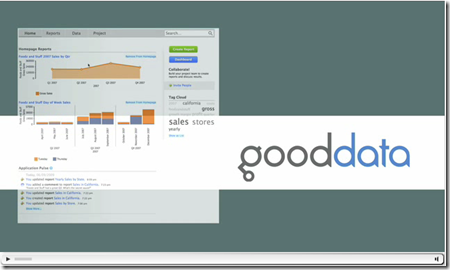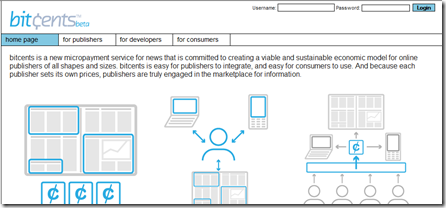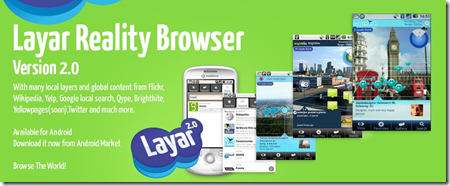http://www.ted.com At TEDxUSC, computer graphics trailblazer Paul Debevec explains the scene-stealing technology behind Digital Emily, a digitally constructed human face so realistic it stands up to multiple takes.
Month: October 2009
Wikipedia for Data
My colleague Mariela popped into my office the other day: “Peter, when we talk cloud computing we should highlight something fundamental: it’s about making DATA more accessible/interoperable, more than making applications interoperable”.
In essence, she saw that Cloud computing is in essence about
OPEN DATA
Mariela is right on.
This is btw one of the big beliefs as well of Russell Daniels from HP, who was a speaker at our Innotribe @ Sibos. Short video interview with Russ below right after the cloud panel discussion:
Over the last couple of days, i found some more evidence on several blogs.
There are positive ways to proceed. Google, for example, a leader in cloud computing, has recently launched a specific project — The Data Liberation Front — explicitly including as a key facet the goal of making sure that users can quickly and easily export data from Google products. This ambitious and extremely important effort should be a model for the rest of the cloud computing industry.
See also Wolfram Alpha API to be released later today and the actual release page
And also the release of the WolframAlpha iPhone app:
My friend Peter Hinssen installed the iPhone app and tweeted yesterday this is the COOLEST thing he has ever seen.
Lots of writers have compared Alpha to Google, but I think that’s a mistake. it’s a data source, not a search engine, and that’s a significant difference. What matters with a data source is the ability to ask a question, get an answer back, and use it as easily as possible. An API minimizes the impedance mismatch: you can do computing directly with Alpha’s curated data.
But there’s another comparison that’s even more relevant: Twitter. What has made Twitter success isn’t so much the web application that lives at twitter.com. What has made Twitter valuable is the huge ecosystem that has grown up around that application: alternate clients for all sorts of platforms, web sites for searching, slicing, dicing, and remixing. Those have all been enabled by a simple and well-thought-out API for dealing with Twitter programmatically. The web isn’t about web pages; it’s about interactions between data sources.
Some other newcomers on the scene:
Good Data raises $2.5M for business intelligence by Andreessen Horowitz, the firm run by Netscape billionaire Mark Andreessen. Btw the same firm is one of the candidates for acquiring Skype, but the Skype founders don’t seem to like it very much. Have a look at the great video on Gooddata’s homepage.
There is Factual.
Factual wants to be the center of the web’s open data. Not a minor detail: Elbaz, who co-founded Applied Semantics and sold it to Google, has self-funded the company. Well-known technology commentator and investor Esther Dyson recently joined Factual’s advisory board. Also Nova Spivack blogged about Factual here. Nova Spivack and Ester Dyson are two of the smartest people when it comes to semantic web and new technologies
And Techcrunch Erik Schonfeld had a blog as well last week. With a link to a great video:
This is like Wikipedia but then for structured data ! It not about mashing-up user interfaces anymore. The next web is about being able to source good data sources and mash them up.
Imagine if we would start using this for all sort of financial services.
Semantic data/web will definitely be a topic for Innotribe @ Sibos 2010 in Amsterdam. Book already the dates in your calendars: 25-29 Oct 2010.
New Money and Payments
The last couple of days there have been several blogs reporting on new types of money and payments.
First there was the great interview of Steve Boyd with Jamais Cascio.
Some highlights of the highlights:
You have to get a critical mass of people to agree in a new fantasy.
Groups with shared purposes could in fact have new currencies.
The unbanked are the source of many innovations in the world, right now.
Governments start to care when economies arise.
The question of anonymous money and the roll of cell phones in future money.
Then there were 2 news items on micropayments to news publishers:
The first one related to a New platform for micropayments to news publishers
The key comment in the Spingwise article being that:
…for bitcents to work, it will need to attract enough publishers who produce content that readers are willing to pay for. Meanwhile, other ventures—like the soon-to-be-launched Journalism Online—are also working to create a new economic model for the news industry. Keep a close eye on this space—change is in the air, and business opportunities won’t be far behind.
Especially if the big boys want a piece of the cake. Here comes Google again.
I found this one via my Twine subsription, and Nova Spivak was the first one posting it.
Again, some highlights only:
Google is developing a micropayment platform that will be “available to both Google and non-Google properties within the next year,” according to a document the company submitted to the Newspaper Association of America. The system, an extension of Google Checkout, would be a new and unexpected option for the news industry as it considers how to charge for content online.
While currently in the early planning stages, micropayments will be a payment vehicle available to both Google and non-Google properties within the next year. The idea is to allow viable payments of a penny to several dollars by aggregating purchases across merchants and over time. Google will mitigate the risk of non-payment by assigning credit limits based on past purchasing behavior and having credit card instruments on file for those with higher credit limits and using our proprietary risk engines to track abuse or fraud. Merchant integration will be extremely simple. [grey bold emphasis Google]
In a brief paragraph entitled “business model,” Google suggests that it would share revenue in a similar fashion to the iTunes App Store and its own Android Market, both of which take a 30% cut of revenue.
I downloaded the document and besides what’s covered in the blog post, it contains some other interesting facts about Google Checkout:
Key statistics:
• Tens of millions of registered Checkout users
• Several hundred thousand registered merchants, high number of sellers selling digital
goods
• $ Billions of orders processed
Planned Roadmap:
• Simplified Merchant Integration – Dramatically increase the speed by which merchants
integrate with Google Checkout. Target early 2010
• Guest Checkout – Allow users to buy goods with Checkout-enabled merchants without
creating an account. Target Q4 2009
• Stored Value – Gift cards and maintaining a balance for buyers on Google Checkout.
Planned for future
• Micropayments – Aggregation of small payments by buyers for purchasing digital
content. Planned for future
The PDF also mentions some really interesting thinking on what i would call “convenience” in a multi-vendor marketplace environment:
Easy Subscription Sign-up and Management for Users Plus Content
Packaging and Multiple Payment Forms for Publishers
o Single sign-on capability so users can use one login for access to premium content and a central place to manage subscriptions and payments.
o We envision the typical scenario to be where a user pays a monthly fee for access to a wide-ranging package of premium content. One example of a "package" might be full access to the WSJ; another "package" might include the top 10 business publications. Google believes that there is real power and benefit to publishers in providing these sorts of broad, multi-publication access passes.
o For multi-publication packages, publishers will receive a revenue disbursement that is proportional to the usage of their content in the package.
o While providing an option for micropayments will be important, we do not believe it will be the norm for accessing content. Example 1: A user has access to the "basic" premium content package. She hears about the latest Sarah Palin article in Vanity Fair, which is not part of her package. She can make a one-off payment of $0.10 to read that article, which will show up on her bill as part of the monthly payment.
Just think: replace publishers by financial services providers, and micropayments by regular monthly payments. Sounds like a marketplace for financial services. With a single-sign on for the marketplace syndicated/federated to the underlying providers of services. But i am deviating, this post is about new money and payment systems.
Last but not least there is the iPhone Payment App by Twitter creator Jack Dorsey:
Here are the dongles again ! And i thought that the whole idea of smartcards, USB-Tokens, and other physical tokens were gone, as they do in my opinion no sense in a mobile world. Wrong again, Peter ! (Don’t worry, i am stubborn 😉
The innovation is in a small, plastic card reader that fits in to the headphone jack of an iPhone (or iPod Touch) and transfers the credit card’s swipe data to the app. After the employee enters the amount to charge, the customer confirms by scrawling their signature with their finger and then either one enters the customer’s email address to send the receipt to. The payment is processed by Square for a small percentage plus a fixed fee; the funds are transferred directly to the store’s bank account, cutting both time and complexity on the processing side. The customer’s receipt includes a map showing the location of the transaction which is handy for those who record, sort and file such things.
Jack Dorsey (please DO read the man’s Wikipedia bio), the man who all but built Twitter in a matter of two weeks, has been working on a half-secret start-up project since around May. His new venture — dubbed, funnily enough, Squirrel — is based around the concept of using the iPhone as… yep, a portable, personal cash register; essentially the exact device which Square has created
Two links if you want to know more. Here and Here.
Big changes coming in this area. Have you seen any bank involved in these innovations ?
Re-Inventing Wall Street: Finance 2.0
When Umair Hague posts something on his blog, i always take some extra quality time to read.
Umair Haque is Director of the Havas Media Lab, a new kind of strategic advisor that helps investors, entrepreneurs, and firms experiment with, craft, and drive radical management, business model, and strategic innovation.
Always sharp, and always in for a good controversy and/or polarizing opinion. I am a strong believer in polarization being a big driver for Innovation.
Have a look at his latest blog post titled “Reinventing Wall Street from the Bottom Up”
Some super-quotes:
Welcome to the new trickle-down economics. Here’s how it works:
- Banks massively misallocate capital.
- The government uses money reserved for public goods — education, transportation, healthcare — to bail out banks instead.
- The bailout should trickle down, as lending to businesses and consumers alike sparks economic activity.
- No effort to settle bad debt is made; little reform of corporate governance, industry structure, or competition is necessary — because banks are too big to fail.
- Little oversight of steps 2, 3, or 4 are necessary, because markets are perfect resource allocators, and market actors are rational.
Result? In trade terms, a shock worse than the Great Depression, as Paul Krugman has noted.
In employment terms, a lost generation.
In monetary terms, a flight from the dollar.
In microeconomic terms, the stagnation of America’s industrial base.
If it weren’t for Apple, Google, and a handful of old-school companies pursuing dramatic reinvention, like Wal-Mart, we would be in a Great Depression.
In macroeconomic terms, value is transferred from you, me, and our grandchildren to Wall St — permanently.
And also:
The greatest transfer of wealth in history is taking place. It is already roughly worth a year’s output of the entire United States, or about 5% of the entire world’s output.
Or…
It’s is faith-based economics — and it’s Barack Obama’s biggest mistake. (Consider for a moment that 20+ per cent of hedge funds misrepresent info.) For years, George Bush hunted for phantom WMDs, while terrorist networks flourished under his nose. Now Barack Obama is hunting for a phantom prosperity, while the greatest robbery in the world is happening right under his nose.
In the same blog post, he is referring to his Finance 2.0 Manifesto, published back in April 2009, where he makes 9 recommendations for a better financial system. I have cut & pasted the whole lot, not because i am lazy, but because the context is worthwhile reading as well (orange/red highlighting by myself)
Edge funds. An edge fund is the opposite of a hedge fund. Where hedge funds are opaque, edge funds are transparent. Where hedge funds are closed, edge funds are open. Where hedge funds are run for near-term gains, edge funds are in it for the long run. Where hedge funds create artificial book value, edge funds create value that accrues to real people and society. Where hedge funds focus on long and short transactions, edge funds focus on relationships. Think Marketocracy on steroids.
Macro and microcurrencies. A currency tied to national interests determined by a political elite? That’s so
20th century16th century. A better financial system needs better currencies. Finance 2,0 will be built on microcurrencies and macrocurrencies: currencies which operate hyperlocally and transnationally. Why? Because people shouldn’t have to bear collective responsibility for bankers looting or regulators cahooting. In the 21st century, the quiet tyranny of economic collective responsibility is intellectually bankrupt: it is fundamentally unjust, deeply inefficient, and vastly value-destructive.Social banks. Despite what marketers tell you, banks do not exist to maximize profits. They exist to maximize the safety of deposits. We’ve been taken for a very expensive ride. Next-generation banks will be structured as social enterprises — because the incentives to safeguard deposits and reinvest profits for the common good perfectly converge to a dominant strategy for long-run value creation.
Fair markets. Markets are free like a shark is a fish. Anyone can play — but only at the risk of being manipulated, looted, and defrauded by the deepest-pocketed. The anonymous arms-length transactions orthodox economics lionizes are, in practice, just a hyperefficient mechanism for front-running, predatory trading, and bid rigging. Next-generation markets aren’t just free: they’re fair. They are markets where information about reputation, reliability, and relationship thickness are hardwired into the DNA.
Stakeholder communities. Institutional investors are so 20th century. Centralizing control over our biggest corporations in the hands of a bunch of old dudes asleep at the wheel was as good an idea as the spork: interesting in theory, useless in practice. Tomorrow’s radical innovators are already updating corporate governance for the 21st century, by letting communities of stakeholders shape managerial decision-making. Think mega-Etsy.
Whisper bullhorns. Why is trading such a great business? Because traders have access to info that you don’t. Why can’t everyone get in on the whisper circuit that powers prop desk profits? Because no radical innovator has taken on the challenge yet of amplifying the secretive whisper circuit into a blaring bullhorn. But imagine if the rumours that drive share prices up and down on trading desks were Twitterfied. The result would be a financial revolution: the market power Big Trading enjoys would vaporize faster than you can say "insider info."
Googlizing financial instruments. What business is Wall Street really in? The business of hoarding information: to seek a so-called informational edge. Of course, markets don’t work if everybody’s hiding info — they only work when people are revealing it. Google can help me find a tennis racquet, Match can help me find a date, and Last.fm can help me find some tracks to rip — but who can help me find a better place to put my cash that effortlessly? No one. And that’s a massive reason why we’re stuck with a 1.0 financial economy.
Anti-ratings. Your credit is rated mercilessly. But does anyone rate lenders — not to mention brokers, banks, and investors? Today’s crisis would have been far less severe if consumers had access to knowledge about who was a trustworthy lender — and who was going to sell them the financial equivalent of a roadside bomb. Credit ratings alone cannot create more efficient financial markets — doing so requires better information about both buyers and sellers of every kind of financial product.
Open source modeling. Every bank built the same models. Every bank built the same flawed models. Every bank built the same flawed models on similarly erroneous assumptions. How dumb is that? Incredibly. Unleashing the power of open source to vaporize this black hole of incompetence is going to be a tremendously powerful path to innovation. The peer review, voluntary contribution, and always-on negotiation at the heart of the open source model create powerful incentives for quality — which is exactly what the hare-brained quants at banks lacked.
Finance 1.0 cannot power growth 2.0. Yesterday’s finance cannot power tomorrow’s prosperity. Bailouts, taxes, nationalization, regulation are what your discussions this week are focused on. These can limit the depth and intensity of the crash. But what they cannot do is build a radically more efficient, productive, and effective financial system.
See also my previous post about Peter Thiel and the Singularity, where he said that credit only works in a growth society.
That requires a better kind of finance altogether — one designed not merely to make the worst among us richer, but
to make us all authentically, meaningfully wealthier.
That’s why finance 2.0 is the future.
This is the sort or personal and corporate values we want to discuss as underpinning for our Long Term Future. Hence the need for the Think Tank we are building from Flanders to gather like minded authentic people who do care about our next generations.
Augmented Reality is Real Now
The big news this week is that Layar’s iPhone App is approved and available.
From now on we call it the “Reality Browser”
See also sub-line “Available for Android”. I clicked on the Android Marketplace and this is what i got.
Also have a look at the 162 Layers that are already available. Yes, you got it right: 162 Layers available already.
Droid vs. iPhone
The blogs are full these days of Android phones coming to the market. Especially on the Verizon-Motorola-Android phone that is being launches as we speak.
I just picked one of the articles: the one from Michael Arrington on TechMeme.
+++Update: very complete update by Scobleizer on 8 Nov 2009.
From a US perspective probably the key differentiators is that Droid comes with Verizon. Every time i meet folks in the US, they complain like hell about AT&T. In other regions this may be less relevant – as some countries do not allow packages deals – and many have hacked iPhones that use other providers.
I don’t think Apple cares a lot about the hacked iPhones. Sold is sold. For Apple it is about market share in highly profitable markets. They have already very successfully milked the iPhone profit/cash cow. They may be worried about marketshare competition with Android. But Apple will for sure come-up with something else that is completely disruptive – not necessarily in iPhone land – to reset the landscape once again. And who still talks about Windows Mobile, albeit the latest version was released only a couple of weeks ago with a lot of marketing dollars ?
Last i heard that iPhone in the US is on its own counting for 21% of all mobile internet browsing. That’s a really big part of the mobile pie. No wonder Google goes full steam ahead.
You probably all have read about Google being bullish during last weeks financial results: crisis is over, Android going to be very very big, and going to really spend money in innovation. What will that mean ? Already now, Google is cranking our one innovation after the other. At about one announcement per week. So, now they are going to really invest in innovation ? They sit on a cash-pile of more than 20 billion USD. It will be very interesting to see where they will put their money.
Next week, Microsoft in launching Windows 7. I just read that Apple has almost 10% of the “PC” market in the US. Looking at recent history, i would not be surprised that both Google and Apple will use the publicity momentum of Windows 7 to undercut Microsoft’s airspace with some of their own announcements.
My good friend Nick was already playing with one of the Android phones when we are at Sibos. As a matter of fact, Nick has something like seven (7 !) mobile devices in his backpack ! Anything from the iPhone and iTouch to the latest HTC (with our without Windows) and the latest Android.
He told me: “once you have touched the Android phone, you realize how outdated the iPhone is “. Wow.
The key question will be whether Google can build an as successfull application marketplace as Apple. Nick runs more than 350 iPhone apps on his iPhone and his iTouch.
So Nick knows what he talks about. Nick, feel free to jump into the comments and share your reflections on the iPhone vs. Android debate.
Future of shopping by Cisco
Life is full of synchronicities. This week we had a meeting with the Innovation team of Cisco to learn from each other how we stimulate innovation in our organizations and ecosystems.
I was surprised how much Cisco is “looking” more and more like Microsoft. Not from product side, but from the way on how they look at introducing new technologies into their enterprise customer base, trying to cross the chasm with dedicated sales specialists and consultants, looking for the next 1-10B $ business, etc, etc
Now i discover by coincidence (my morning reading in Google Reader) the following video about the future of shopping. It could have been part of Microsoft’s 2019 Future videos. It also shows what happens if one of the big boys starts to mingle in the augmented reality debate big time.
There are 2 more videos that i found via on YouTube:
And
At the end of the videos, there is a link to Cisco’s website. The video seems to be part of a campaign to announce some live on-line 20 Oct 2009 “Experience events”
Sound interesting to me. I copied the registration details below:
Americas – Tues., Oct. 20, 11:00 PDT (18:00 GMT)
Europe – Tues., Oct. 20, 14:00 CET (12:00 GMT)
Asia Pacific – Wed., Oct 21, 13:30 Beijing (5:30 GMT)
Augmented Reality: Sunday Techno Brunch
Just had a really lazy sunday morning brunch served in an a-typical techno fashion.
Fun found via Josh Spear’s Today and Tomorrow.
Link to the video here.
The comments (in dutch) are also funny: “it’s a strict-continental breakfast”, or “it’s all about solving problems, not about delivering a fantastic breakfast”.
This is a really good example where my boss would say: “Looks like toys for boys, Peter. But what business problem are you trying to solve ?
The Power of Choice
Great post on the confused of calcutta.
How consumerization of IT now really starts hitting the enterprise. Quite obvious, and i am sure you too use more and more external tools like Google Docs, iPhone Apps, Drop-It and other company external services to get your job done.
The article however is on something more profound that is emerging. The power of choice, and how companies need to plan to design services to be “choice-able”:
The more intriguing questions of choice come up when you look at how tasks and resources get allocated to each other within an enterprise. Firms exist at least partly because they serve to reduce transaction costs. They could borrow capital cheaply, obtain global reach and scale, attract and retain staff by the provision of pay and benefits. At least that was the theory; over the years those advantages have dwindled: enterprise credit ratings aren’t what they used to be, the internet lowers the barrier for global reach and scale, security of tenure is no longer to be assumed and benefits sometimes become millstones around legacy operations. So yes, firms are changing.
Despite all that change, some things haven’t changed. Management structures exist to define and agree objectives, to prioritise activities in the context of those objectives, to allocate scarce resources to the completion of those objectives, to monitor feedback on performance and to intervene when and where appropriate, to fix problems, overcome obstacles, resolve conflicts.
and
People choosing what they do, when and how they do it, where they do it, what services and tools they need to do it, what devices they use. All possible. All being done now. But not holistically across the enterprise anywhere.
For that we need to architect our services differently. Which is where outside-in design comes in, designing for the customer, designing to provide that customer with choice. At a level of abstraction, everyone’s a customer. Your actual customers. Your trading partners. Your supply chain. And your staff.
Google Wave for Dummies
Apparently this video gets 1 billion hits per day ? Hardly can believe that. 1 billion is big number. Anyway, let me add 10-20 additional hits by linking to it from my blog 😉
This animation is cute, but does not add much to the content that was part of the May2009 Google IO Launch event.
Since Sep 30, 2009 Google has released 100,000 test accounts. The web is full these days of Wave enthusiasts.
There are believers and non-believers. I count myself to the believers. But there are some pretty solid non-believers. One of them is Robert Scoble. There an interesting discussion going on at Scobleizers blog.
His first blog “Google Wave crashes on beach of overhype” had a pretty hefty start.
But this service is way overhyped and as people start to use it they will realize it brings the worst of email and IM together: unproductivity.
Apparently his created such an avalanche of comments on his blog that he gave it a second try. He stays a non-believer. His Oct 3 post title is Google Wave’s unproductive email metaphors. His conclusion now is:
I took the day off and said “what if they are right?” and “is Google Wave a really great way to collaborate with other people?” On coming back to Google Wave with fresh eyes tonight and even after collaborating with people on a few things my answer is “no, they are not right” and “no, Google Wave is even less productive than email.”
What is really interesting is that Google Wave polarizes opinions. This is one of the key tenets of innovative things. They polarize.
You still can continue to use mail (one of Scobleizer’s arguments was “anyone can send mail”). It’s like one of the very nice Outlook add-ons i saw being demo’d at DEMO2009 from Liaise. Somewhere half-way the video, the presenter pauses for a second to point out that your counterparty does not need Liaise installed. But yourself, you benefit from the Liaise features.
Why i am a believer ? Besides all the cool features in the May2009 Google/IO video, for me the most important thing is that non only Google Wave will run a Google domain, but any enterprise can have Wave running in it’s own domain. It’s a paradox, but this is one of the reasons of success of e-mail. That an enterprise can run and manage its own email-server or domain. These days for small business more and more as a SaaS offering.
I believe the power of Google Wave is its potential for enterprise interoperability cross-domains. And why not have some vertical business anchors to run Google Wave as a SaaS offering for a vertical industry, even just to bootstrap that vertical community ?
It would probably offer a solution for the business problem of having secure and efficient collaboration processes, within and across the own corporate domain. And with a partner like Google that really can scale.
Scale, interoperability and open-API’s are for me the reasons why i believe Google Wave will be a big hit. Of course, in the current version there are plenty of bugs and inefficiencies as Scoble rightfully points out. But i am a believer that Google will fix these. And yes, me too I would like to get one of those beta accounts, please Google. Is the above good enough publicity to get one ?















